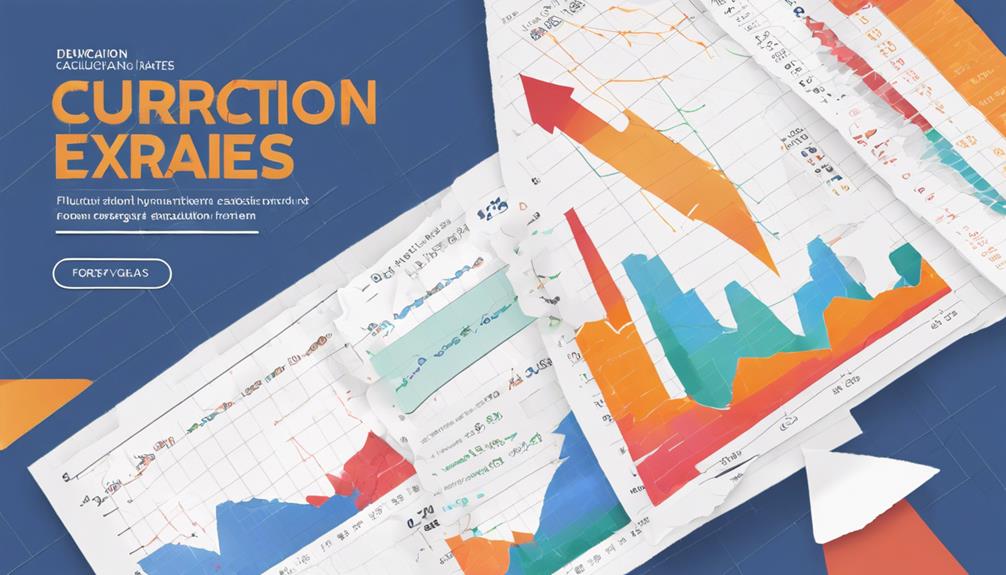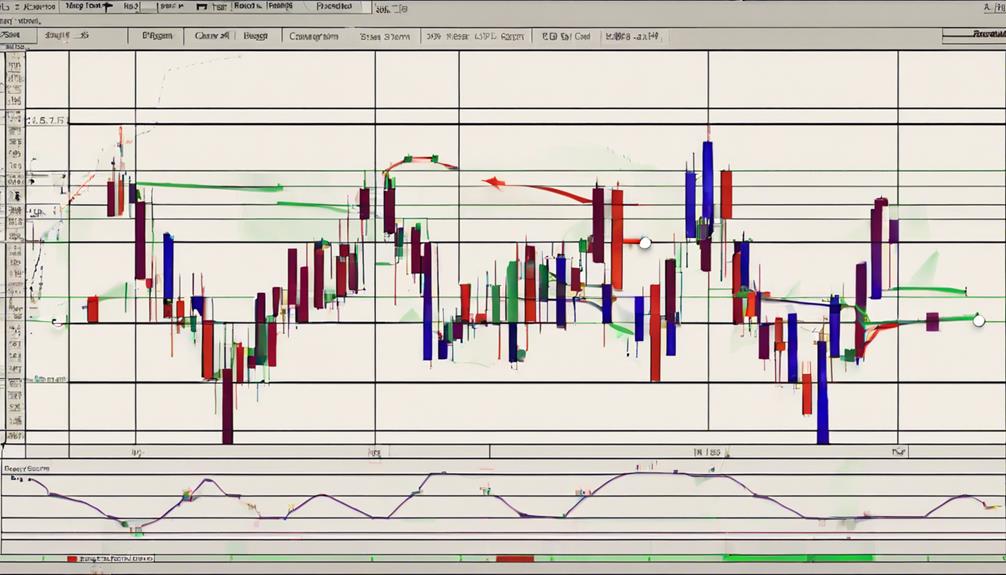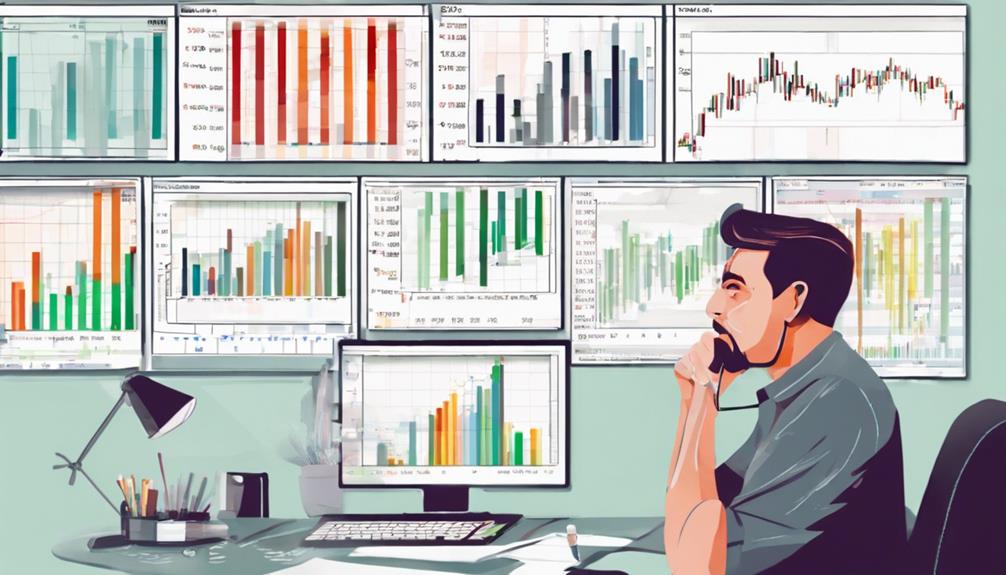In the realm of forex trading, standard deviation serves as a critical tool for assessing market dynamics and shaping trading strategies. By understanding how standard deviation influences volatility, risk evaluation, and trend identification, traders gain a competitive edge in navigating the ever-changing forex landscape.
The guide not only demystifies the calculation intricacies but also sheds light on practical applications that can significantly impact trading outcomes. As we explore the nuances of standard deviation in forex trading, it becomes evident that mastering this metric is essential for making informed decisions and achieving consistent profitability in the market.
Understanding Standard Deviation in Forex Trading
Indispensable to the realm of Forex trading, standard deviation stands as a pivotal metric for assessing the extent of price fluctuations from the mean average within the market. The Standard Deviation Indicator plays a crucial role in determining market volatility, which is essential for traders to make informed decisions.
By understanding the variations in price movements around the average, traders can gauge the level of risk associated with a particular currency pair or asset. Moreover, standard deviation is instrumental in the application of technical analysis tools like Bollinger Bands, which help traders identify potential entry and exit points based on price volatility.
Effective risk management strategies heavily rely on standard deviation calculations, as a higher standard deviation implies greater price variability and risk in the market. Therefore, mastering the concept of standard deviation is imperative for traders aiming to navigate the complexities of the forex market with precision and confidence.
Calculating Standard Deviation for Analysis

In the realm of forex trading analysis, the calculation of standard deviation serves as a fundamental tool for quantifying price fluctuations from the mean average, providing valuable insights into market variability.
Traders calculate standard deviation using the formula Standard Deviation = √Σ [(X – μ)² / N], where X represents data points, μ is the mean average, and N is the number of data points. This calculation helps traders understand the deviation of prices from the average over a specific period, highlighting the level of variability in forex market movements.
By analyzing standard deviation, traders can identify extremes in price movements and potential entry or exit points in their trading strategies. Moreover, standard deviation plays a crucial role in risk management, allowing traders to adjust their positions based on price variability and market conditions.
Utilizing standard deviation alongside tools like the Bollinger Bands indicator can enhance the effectiveness of trading strategies by providing a clearer understanding of market volatility and potential risks.
Utilizing Standard Deviation in Trading Strategies

Standard deviation serves as a critical metric in trading strategies, offering traders valuable insights into historical volatility, market momentum, and effective risk management techniques in the forex market.
By incorporating standard deviation into their trading strategies, traders can utilize tools like Bollinger Bands, which are based on moving averages and standard deviations to identify potential entry and exit points. When prices reach the higher standard deviations of the Bollinger Bands, traders may consider these as overbought or oversold conditions, indicating possible reversal points.
Additionally, standard deviation is used in setting stop-loss and take-profit orders, allowing traders to manage their risk effectively by placing these orders at statistically significant levels based on market volatility.
Furthermore, standard deviation aids in analyzing market behavior by providing insights into the mean and potential fluctuations from that mean, enabling traders to make more informed decisions regarding position sizing and risk management strategies.
Exploring the Downsides of Standard Deviation

Despite its widespread use in trading strategies, the reliance on standard deviation comes with inherent limitations that traders must carefully consider. When exploring the downsides of standard deviation, several key points emerge:
- False sense of security: Relying solely on standard deviation may provide a false sense of security as it assumes a normal distribution of data, which may not always hold true in financial markets.
- Limited predictive power: Standard deviation's backward-looking nature means it may not accurately predict extreme market events or abnormal behavior, leaving traders vulnerable to unexpected price movements.
- Inadequate risk assessment: Market conditions can significantly impact standard deviation, leading to situations where it does not accurately reflect the risks associated with certain assets or trading strategies.
Understanding these limitations is crucial for effective risk management in trading. Traders should supplement standard deviation with other techniques to enhance their overall approach and account for the dynamic nature of financial markets.
Enhancing Trading Performance With Standard Deviation

Enhancing trading performance through the strategic utilization of standard deviation in forex involves employing advanced risk assessment techniques to optimize decision-making processes.
By calculating standard deviation, traders can better understand price volatility and make informed decisions on optimal entry and exit points. Standard deviation quantifies the variance in price fluctuations from the average, providing valuable insights for risk management.
Utilizing standard deviation in forex trading not only helps traders navigate market uncertainties but also enhances their ability to identify potential market conditions for profitable trades. By incorporating standard deviation into their trading strategies, investors can gain a deeper understanding of market dynamics and improve their overall performance.
This analytical approach allows traders to make data-driven decisions based on statistical measures, ultimately leading to more informed and successful trading outcomes in the forex market.
How Can I Apply the Top 10 Tips for Standard Deviation in Forex Tutorial to Exploring Standard Deviation in Forex Trading?
When exploring standard deviation in forex trading, it’s essential to apply the top 10 tips from a forex tutorial standard deviation tips guide. Understanding this statistical measure will help in analyzing price volatility and making informed trading decisions. Proper application of these tips can significantly impact trading success.
Frequently Asked Questions
How Do You Use Standard Deviation in Forex Trading?
Standard deviation in forex trading is utilized to measure price volatility, assess risk levels, and identify potential entry and exit points. It quantifies the deviation of prices from the average, aiding traders in making informed decisions based on market uncertainty.
How Do You Find the Standard Deviation of an Exchange Rate?
To find the standard deviation of an exchange rate in forex trading, calculate the variance by determining the mean of historical price data, computing the squared differences from the mean, summing them, and dividing by the data points. Square root the variance to obtain the standard deviation.
What Is an Example of a Standard Deviation in Trading?
An example of a standard deviation in trading involves calculating the deviation of asset returns from the mean. This statistical measure helps traders assess price variability, identify market volatility, and adjust risk management strategies accordingly, aiding decision-making and setting realistic targets.
What Is Deviation in Forex Trading?
Deviation in forex trading refers to the statistical measure of variance from the mean price movements. It aids traders in assessing market uncertainty, determining optimal entry/exit points, and managing risks effectively, crucial for decision-making and strategy development.
Conclusion
In the intricate world of forex trading, standard deviation serves as a powerful tool for assessing risk, analyzing market trends, and making informed trading decisions.
By understanding and incorporating standard deviation into trading strategies, traders can navigate the volatile forex market with precision and confidence.
Just as a skilled navigator uses a compass to chart a course through rough waters, traders can rely on standard deviation to steer them towards profitable opportunities amidst the unpredictability of the forex landscape.
